Toolbox in Action
Explore how participatory meanwhile interventions unfolded in the context of seven regeneration initiatives across Europe & Asia.
Particularly suggested for policy-makers, practitioners, and researchers.
Highlights
Euston London
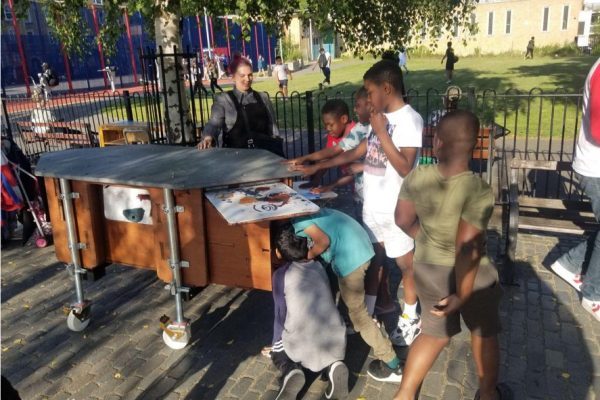

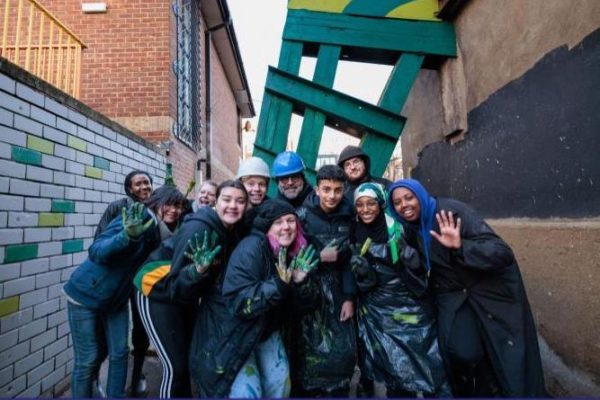
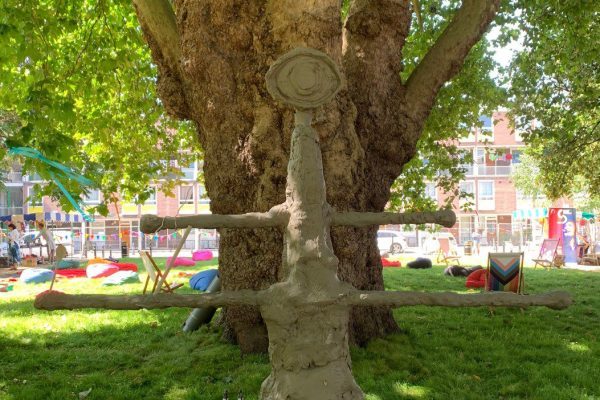

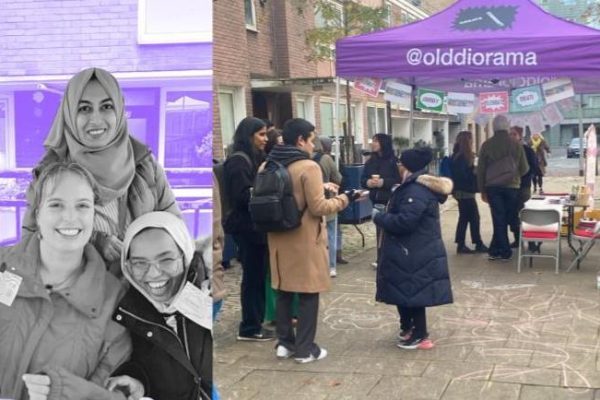
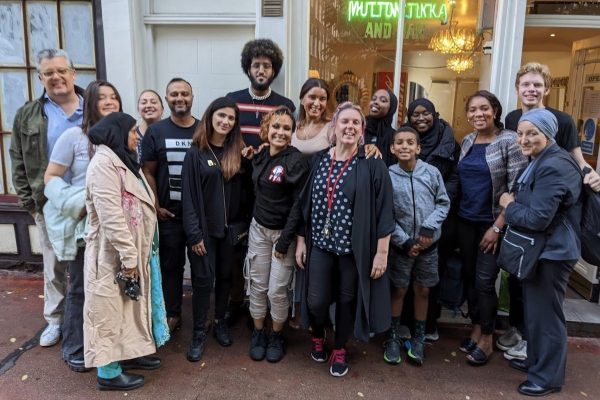
Extract of an interview with the T-Factor team at University of the Arts London – Central Saint Martins, November 2023.
Transforming distrust into trust
‘In Somers Town, we’d already established strong connections with local community organisations and the residents they serve, having worked there for about four to five years prior to the pandemic. Somers Town communities had previously experienced the upheavals of King’s Cross and St Pancras regeneration development. Many residents and community organisations expressed their dissatisfaction from past consultations and engagements, feeling their concerns weren’t addressed. There was evident distrust between them and larger institutions, including CSM and UAL, who some perceived as merely chasing funding without genuinely addressing community needs. However, our consistent involvement over the years, delivering tangible outputs and collaborating with council and community organisations to help secure funding that brought resources into the neighbourhood, built a foundation of trust. Community leaders recognized our genuine commitment to collaborate and address residents goals and needs rather than always centring our own objectives. We had co-delivered several significant initiatives in the area, seeking to revive Chalton Street Market and increase access to arts and making activities in the area even before T-Factor funding was place, which we developed further through the Euston pilot.’
Addressing Engagement fatigue
‘One challenge was Euston’s crowded, complex and sometimes contested context. With numerous organisations already operating in the area, there was a need for these entities to collaborate. Residents were repetitively approached with similar queries by different groups, such as HS2, the council, and developers, leading to frustration and ‘engagement fatigue’. This issue was highlighted within the findings of the Oakervee review, announced in 2019, which led to the formation of the Euston Partnership to foster collaboration between operators at Euston and provide ‘a single guiding mind for the entire Euston campus.’
Adaptation & Evolution
‘Despite disruptions, the Meanwhile Use Working Group (MUWG) stabilised in 2020 after undergoing reforms. This stability offered T-Factor a bridge to connect with the overarching development. The group comprised key stakeholders – Lendlease, HS2, Euston Partnership, Network Rail, and the council. This enabled us to discuss and trial T-Factor tools, assessing what inclusive and equitable access to Meanwhile would encompass. A realisation emerged: there were no available Meanwhile spaces within the designated red-line during the project’s duration. This led to discussion on whether activities and spaces outside the red line were in scope for the MUWG. While the group was indeed committed to benefiting residents, spaces outside the red-line of the development weren’t traditionally labelled as ‘Meanwhile’. This experience led to a more expansive definition of Meanwhile, acknowledging both time and space components, and foregrounding neighbouring communities impacted by the development throughout its duration. Discussing the institutional framework and relationships, our connections evolved through prior collaborative practice, gradually introducing and integrating with the project. Our previous collaborative working with groups in Regent’s Park Estate and Somers Town laid a foundation, enabling mutual understanding of ‘Meanwhile’ – its scope, significance, and potential implementation. Through the MUWG, we gained the group’s trust by honouring their concerns, acknowledging constraints, and maintaining the confidentiality of certain discussions. While it’s hard to say if the group would’ve naturally progressed in this direction, the group undoubtedly adopted and resonated with this inclusive language, aiming for an ‘inclusive and accessible’ version of ‘Meanwhile’, albeit within existing financial and operational confines’.
Leveraging past consultations and aligning activities
‘We actively aided the participation team and other stakeholders in consolidating consultation findings. Over the past decade, numerous public consultations have been carried out. A primary aspect of our scoping work was to compile and synthesise the findings of these prior consultations, so that our participatory activities with residents and stakeholders would respond to priorities previously defined by residents rather than start from scratch. This effort was driven by the desire to avoid redundant questioning that contributes to consultation fatigue and to respect the time and input of those previously engaged. This approach resonated with our stakeholder network, as they could see our genuine efforts to acknowledge past work and add value to ongoing community and duty holder initiatives. Rather than positioning itself as the primary agenda, the T-Factor project aimed to serve the community and the MUWG. This approach of working alongside and through existing organisations and supporting and furthering established goals – especially those of community organisations – proved crucial in our activities.’
Supporting community goals
‘In Regent’s Park Estate, our key collaborator, Ellie, whom we knew from our projects with Fitzrovia Youth in Action, was commissioned by Camden and Islington Public Health team to initiate the “Community Champions” program on Regents Park Estate. This initiative aimed to support residents to define and lead activities that enhance the health and wellbeing of people living in the Regent’s Park Estate. Under Ellie’s guidance, the group defined their concerns, which included community safety, litter, fly-tipping, and other issues impacting their living environment and quality of life. They proactively undertook litter picks and estate walks to bring residents together, identify strengths, challenges, and areas for improvement. The mobile makerspace idea prototyped by MA Industrial Design students was further developed by one of them, Tyler Inberg, as his graduation project. Redefined as the “community workbench” the prototype was co-developed by Tyler working in collaboration with (and later as) the Community Champions. The workbench found its permanent home with the Community Champions who adopted it as a platform for engagement and creative activity outdoors in Cumberland Market. The workbench also provided an opportunity to work more with the Camden Green space team and understand their goals. This collaboration is an example of the way in which a project can evolve through synergy and reciprocity. The project goals aligned with those of residents and other stakeholders. We realise the significance of supporting and amplifying the existing goals and activities of the Community Champions. Rather than trying to get residents to participate in T Factor, we sought ways that T Factor could help the Community Champions and other residents and community organisations in Somers Town as well as Regents Park Estate, to achieve their goals.’
Resources allocation
‘From the outset, a significant challenge was determining how to resource the various initiatives. While we had access to an art and design school, facilitating engagement from our academic and student body wasn’t straightforward. It necessitated navigating through existing mechanisms, identifying course modules and gaps that align with the engagement requirements, and connecting them to ongoing projects. We embarked on establishing a Community of Practice. The objective was to pinpoint individuals within our university cohorts who were eager to expand their practice in sync with the objectives of the resident and community groups. While a good number of our community of practice showed interest, it’s always a challenge to pinpoint tangible opportunities and ensure there’s mutual benefit and reciprocity in participation. Understanding the unique goals of various groups is pivotal. This includes discerning the agendas of the council, residents, and our community of practice. Once these agendas are clear, we act as intermediaries, facilitating introductions and fostering the development of collaborative projects. Several of our colleagues played an integral role in this process. They became actively involved with the Community Champions.’
Iterative Prototyping
‘We see our work as prototyping, developing and refining ways of working through practice and experience. When there’s a need for strategy, we can offer insights from our hands-on prototyping work. Even if we don’t always directly work with the primary stakeholders or duty holders, this iterative approach allows us to progress in phases. Starting small, we gradually expand and refine our efforts until the outcomes land with those responsible for policy-making and implementation. The relationship with the Champions and other community partners, is rooted deeply in trust, friendship, and mutual respect. Emphasising the relational aspect of our engagement as crucial. By positioning ourselves as service providers to the Champions and their associates, we place their aspirations at the forefront of the T-Factor’s objectives. Organisations and individuals we collaborate with, including the Champions, Old Diorama Arts Centre (ODAC), Fitzrovia Youth in Action (FYA), recognize our project’s constraints. They are acutely aware of our deadlines and the need for the T-Factor project to stick to its timeframe. This awareness allows for a two-way support system, where both parties acknowledge each other’s objectives and limitations, ensuring a harmonious collaboration towards shared goals.’
Theory & Practice
‘Navigating the complex world of community projects can often feel like swimming between rocks in a turbulent sea. The methodology you lay out on paper serves as your map, providing a broad overview of the journey from one point to another. However, when you dive into the real-world implementation of that methodology, you often find yourself in tumultuous waters, trying to make headway against unpredictable challenges and obstacles. In T-Factor, these challenges can often make the journey seem unclear. However, certain project milestones, such as transitioning from the Exploring and Inquiring phase to the Scoping and Ideating phase, serve as checkpoints to pause, reflect, and recalibrate based on the progress made so far. While methodologies offer a structured approach and a roadmap, they also need to be adaptable to diverse contexts. In light of this, the post-rationalization aspect of the methodology is crucial. Once a phase or the entire project is completed, there’s immense value in looking back to understand what worked, what didn’t, and why. This reflection not only offers insights into how the methodology was implemented but also provides valuable learnings for future projects’.
Privacy Overview
| Cookie | Duration | Description |
|---|---|---|
| cookielawinfo-checkbox-analytics | 11 months | This cookie is set by GDPR Cookie Consent plugin. The cookie is used to store the user consent for the cookies in the category "Analytics". |
| cookielawinfo-checkbox-necessary | 11 months | This cookie is set by GDPR Cookie Consent plugin. The cookies is used to store the user consent for the cookies in the category "Necessary". |
| CookieLawInfoConsent | 1 year | Used to save user's preferences about the cookies. |
| PHPSESSID | session | Preserves user session state across page requests. |
| viewed_cookie_policy | 11 months | The cookie is set by the GDPR Cookie Consent plugin and is used to store whether or not user has consented to the use of cookies. It does not store any personal data. |
| Cookie | Duration | Description |
|---|---|---|
| _ga | 2 years | This cookie is set by Google Analytics. It is used to identify unique users and it expires after 2 years. |
| _gat | 1 minute | This cookie is set by Google Analytics. It is used to by Google Analytics to throttle request rate. |
| _gid | 24 hours | This cookie is set by Google Analytics. It is used to identify unique users and it expires after 24 hours. |